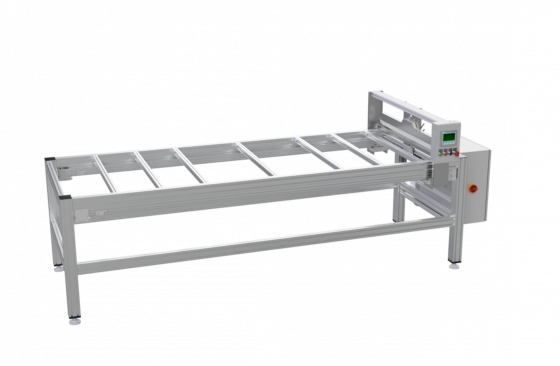The manufacture of lightweight and insulative composite panels requires the application of glue, often multiple layers of adhesive are needed in the ‘sandwich’ of composite material.
The correct and repeatable application of glue is very important, as it directly influence the structural integrity of the finished panel; and automated application of the glue ensures the correct and repeatable application.
Coat weight and bead pattern are considered together with the customer and their glue supplier.
Bead pattern tends to be somewhat governed by the core materials used in the ‘sandwich’ – typically linear parallel beads for foam cores, and diagonal overlapping ‘diamond beads’ for honeycomb core (because the diamond pattern increases surface contact).
Some applications require the ability to:
– program dry (non-glued) areas into the panel assemblies,
– process various (and custom) panel shapes and sizes,
– vary coat weight and/or bead pattern for different core materials.
And all the requirements are taken into account in both the system hardware and software.
Software is designed and written to give the operator all the required settings via a touch screen (4” – 12” touch screen depending on system size and complexity).
Systems can be built for 1-componet (with an option for water mist link to blog/read more), 2-component, and multi-component (e.g., variable cure speed) glues.
Hardware is sized according to substrate/panel size, and the required glue output (Liters per minute).
With options a variety of options to increase autonomy:
– Material handling and automation can be supply as part of the initial glue dispensing system or added later in a modular progression.
– Automatic pot life purging cycles or solvent flushing for 2-component glues, or fluid barrier (Mesamoll) submersion baths for moisture reactive 1-component glues.
– Production data logging and transfer to PC or server-based data storage network.
Showing the single result

